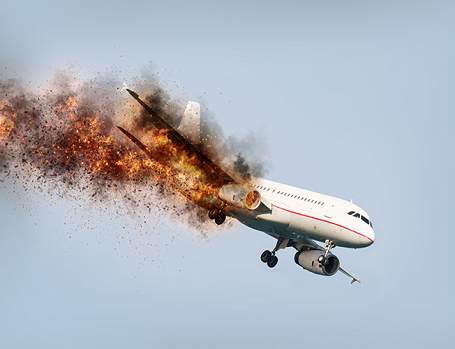The Losses You Can Recover Through an Aviation Accident Claim
 A split second is all it takes for a routine flight to turn into a life-altering disaster. The roar of engines fades into chaos, and in the aftermath, you’re left grappling with injuries, emotional trauma, and mounting expenses. But what many don’t realize is that the financial and personal toll of an aviation accident doesn’t have to be permanent.
A split second is all it takes for a routine flight to turn into a life-altering disaster. The roar of engines fades into chaos, and in the aftermath, you’re left grappling with injuries, emotional trauma, and mounting expenses. But what many don’t realize is that the financial and personal toll of an aviation accident doesn’t have to be permanent.
When negligence or mechanical failure leads to a crash, the law provides a path to recovery. Skilled aviation accident attorneys can help you reclaim what was taken—not just for medical bills and lost wages, but for the intangible losses that linger long after the headlines fade. The question is, do you know what you’re entitled to?
From shattered bones to shattered peace of mind, here’s what you may be able to recover—and why taking action now could mean the difference between struggle and stability.
The Types of Losses You May Recover After an Aviation Accident
Aviation accidents often leave behind more than physical wreckage. Survivors and the families of victims face a wide spectrum of losses—some measurable in receipts and invoices, others in sleepless nights and lifelong scars. Fortunately, U.S. personal injury and aviation laws recognize both, offering avenues for full compensation.
Under the Federal Tort Claims Act (FTCA), victims of accidents involving government-operated aircraft (such as military or FAA-related flights) may pursue claims against federal agencies. Meanwhile, the Warsaw and Montreal Conventions govern international flights, setting liability limits for airlines while ensuring passengers have legal recourse. These laws help ensure that those affected by negligence—whether due to pilot error, mechanical failure, or inadequate maintenance—can seek justice.
1. Economic Losses (Tangible Financial Damages)
These are the direct monetary costs resulting from an aviation accident, including:
* Medical Expenses – Emergency care, surgeries, hospital stays, rehabilitation, and future medical needs.
* Lost Wages & Earning Capacity – Income lost during recovery, or diminished ability to work due to permanent disabilities.
* Property Damage – Compensation for destroyed personal belongings, including luggage, electronics, or other valuables.
* Funeral & Burial Costs – In wrongful death cases, families can recover expenses related to their loved one’s final arrangements.
Unlike non-economic damages, these losses are calculated using bills, pay stubs, and expert testimony to establish exact financial impact.
2. Non-Economic Losses (Intangible but Equally Devastating)
While harder to quantify, these damages reflect the profound personal toll of an aviation accident:
* Pain & Suffering – Physical agony and emotional distress from injuries, surgeries, or prolonged recovery.
* Mental Anguish & PTSD – Anxiety, depression, or post-traumatic stress disorder caused by the trauma of the crash.
* Loss of Consortium – The impact on familial relationships, including loss of companionship, affection, or support.
* Disfigurement & Disability – Compensation for permanent scarring, amputations, or loss of mobility that affects quality of life.
Courts often consider medical records, psychological evaluations, and personal testimonies to assign value to these damages.
Maximizing Your Recovery Requires Strategic Action
Insurance companies and airlines often attempt to minimize payouts, offering quick settlements that fail to cover long-term needs. An experienced legal team can investigate the crash, identify liable parties (airlines, manufacturers, maintenance crews, or even air traffic control), and fight for compensation that truly reflects your losses—both economic and non-economic.
Time is critical, as statutes of limitations restrict how long you have to file a claim. The sooner you act, the stronger your case may be. If you or a loved one has suffered due to an aviation accident, understanding your rights is the first step toward reclaiming what was lost.